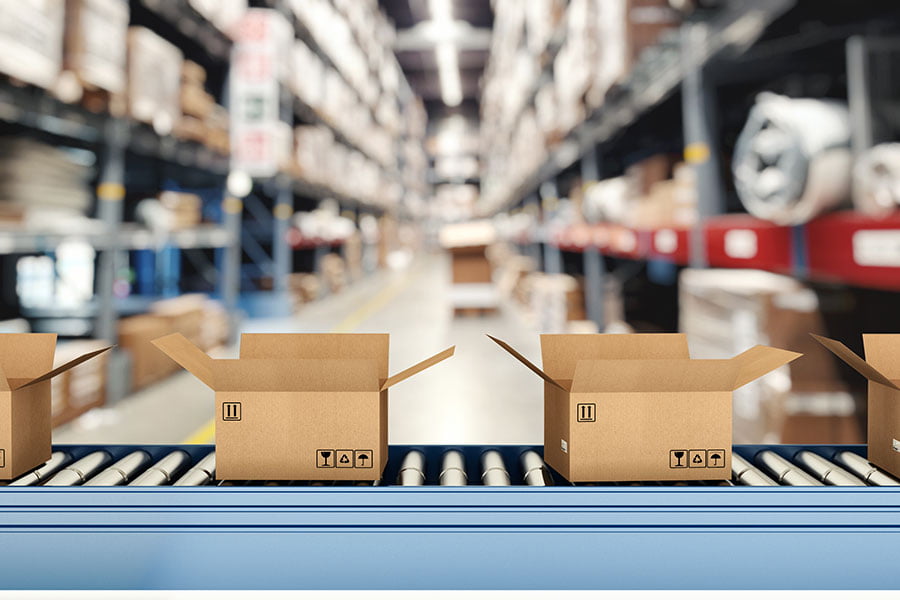Published January 20, 2020
Amazon’s purchase of Whole Foods sent a shock wave through the retail industry that left many recognizing the need to amass demand to deliver on near real-time deliveries. An unexpected benefit from this acquisition was a treasure trove of data that enriched their understanding of the food business. The effect of this deal and its unintended consequences was a wake-up call to the industry to the need to deliver a very high level of customer service.
Traditional brick-and-mortar apparel retailers have been slow to understand the digital shock wave by continuing to offer free 5- to 10-day delivery as their standard shipping. With tight product margins, there is limited profit available to support the rising service level of their customers. Using a shared network that charges them only what they utilize will be the only way to improve their customer service and ensure their long-term success.
As you set your goals in the new year, there is no time like the present to make sure you set the team up for success. Providing high customer satisfaction through all services should always be the number one requirement.
Competitive Landscape
Traditional retail has been grounded on the instant gratification consumers receive when they immediately take possession of purchased items. Unlike traditional brick-and-mortar, digital commerce unlocks a 24/7 worldwide shopping experience. Each has its own advantages and the right end solution must balance the mix of digital and physical stores to provide a holistic go to market strategy.
While traditional retail easily satisfies the instant gratification component, digital commerce must find a way to overcome the ability to instantly take possession of an item as well as the ability to touch and feel the item before purchase. To mitigate the risks of blindly purchasing an item, sellers have developed very liberal returns policies.
Service Level
Amazon has set the bar for consumer expectations in the digital space. As they continue to develop their supply chain infrastructure, it appears they will not stop until they deliver to a customer’s preferred destination within hours of purchase. In essence, they are aiming to provide a valet shopping experience where customers no longer need to lug their goods with them as they shop. This solution may prove to be the death nail for major players as they fail to deliver a similar offering.
Retailers must wake up to Amazon’s actions and begin to develop a competing solution. By developing the right strategy, inventory selection (e.g. color choices, inventory levels, etc.) can be leaned, resulting is smaller inventory levels and a higher service level. In the end, providing a high (e.g. same-day delivery) service level will be critical in delivering products as quickly as customers demand.
Strategy
Customers should be given the choice to select the service level they desire. Not all items are needed immediately, nor can they be offered economically as quickly as others (due to size). In the end, however, sellers must employ a supply chain strategy that can deliver near real-time at no cost to the consumer.
Retailers should develop a base, high service level offering that is rolled into the total sales price. Acceptance of a relaxed service level should serve to help profits. The consumer should receive part of the savings generated, but the largest portion should serve to drive profits.
By developing a distributive logistics model that leverages shared facilities, sellers can minimize their fixed investment and turn costs to only that which they need. By further expanding the use of local stores as distribution centers, sellers can efficiently enable high service levels with minimal cost. In all, every potential distribution point should be critically evaluated and stocking levels defined so each serves a unique purpose in the supply chain.
A distributive solution does not need to increase working capital use on inventory. If completed properly, sellers would maintain or lessen inventory through the use of the flexible network to deliver the desired service level. In some cases, slow movers can be consolidated, enabling the reduction of these items and improving working capital.
Summary
Customers have become very demanding. With the digital era upon us, consumers have become accustomed to endless assortments at low prices.
With the traditional demand level (e.g. price) now ineffective, companies are left using assortment, product design and service levels as their only competitive leverage. This heightened war on service has sparked delivery solutions that please consumers’ demands for near real-time experiences. Developing a fulfillment network that engages systemic efficiencies ensures sellers can compete with minimal incremental cost.
Failing to prepare your operations to keep pace will render you uncompetitive. Creating business processes that can deliver products near real-time economically is critical in lean margin times. Deploying a distributive logistics model is the only way to accomplish the desired result.
Do you have the means to route orders to the optimal delivery point? Do you automatically evaluate the lowest cost delivery means? Are your orders touchless and minimize cost in the process? Competing in today’s customer-centric world requires the inclusion of business management tools to protect profits while delivering high service levels.
As you evaluate your operations this new year, take the time to develop a supply chain strategy that meets high consumer demands while reducing overall supply chain costs.



